#arthur the beast tamer :D
Text

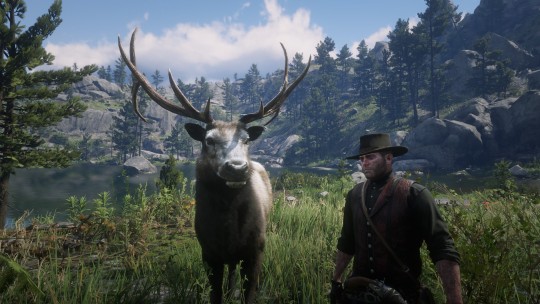

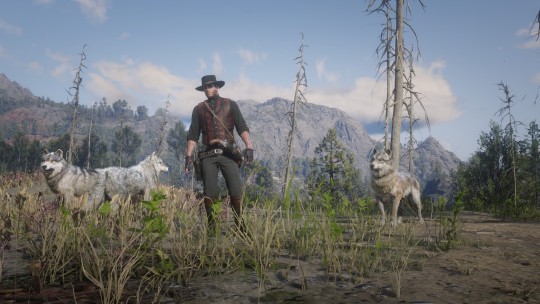
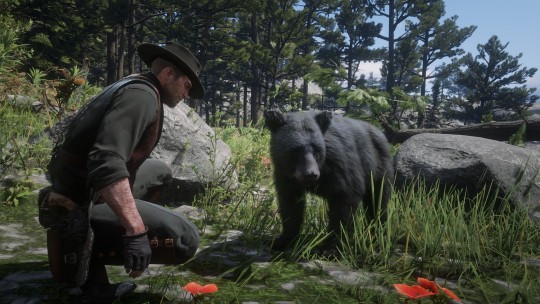

Don't ask me how, but my game glitched hardcore today and suddenly all land animals were locked in place.
The glitched stop once i set up camp and slept, so I sadly couldn't get a picture with all animals.
#rdr2 fanart#rdr2#rdr2 photography#rdr2 arthur#rdr2 photomode#red dead redemption 2#red dead redemption#arthur morgan#I promised i did not use a mod#i have sort of an idea what happened but i can't prove it#arthur the beast tamer :D
152 notes
·
View notes
Text
Arthurian D&D Books
So before the tumblrpocalypse hits us all, I guess I better belt out that mini-review of D&D books that deal with Arthurian legend for @magitekbeth, @fuckyeaharthuriana, and @lucrezianoin. These are specifically 3rd Edition books since that was the edition I started with, and it also had the greatest body of material to work with. 3rd was famous for its glut of books by third-party publishers, and Arthurian mythology was a recurring subject under the Open Source Rules (OSR).
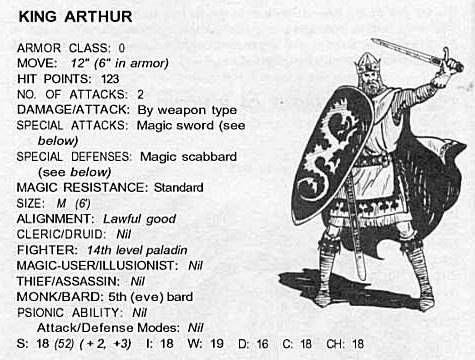

That being said, Arthurian legend has always had some form of presence in Dungeons and Dragons. It is very openly an inspirational source in the fantasy gumbo that is D&D. The original 1st Edition Deities and Demigods included ‘Arthurian Heroes’ in it, along with gods from just about every pantheon. 2nd Edition had a supplement detailing Arthurian legend, though for the life of me I can’t find it.

But let’s start cracking on the 3rd edition books. Atlas Games’ Love and War isn’t necessarily about Arthurian legend, but it is about knights, particularly the romantic characterization of knights that is attached to a lot of versions of Arthurian legend. The book is built around the four concepts of knightly virtue (love, valor, piety, and loyalty), with special knightly orders and character options for each one. It expands outward into fantasy rpg territory a bit more by also offering race-specific concepts for knights, such as orders specifically for dwarves and elves.
Since it doesn’t have to explore Arthuriana, that also gives Love and War more room to explore knight concepts that other books here typically don’t; female knights, knight duos, fallen knights, etc. And as is standard for most of the books mentioned here, Love and War also introduces a variety of subsystems for a chivalric setting, including tournaments, piety, honor, and renown. Interestingly, one of the subsystems is courtly wit, which is a non-combat system meant to emulate the verbal sparring and social maneuvering present in stories about nobility and knights. Again, not Arthuriana, but recommended.

I’ve already talked about I, Mordred before, and it’s what got me thinking about this list again. Like I said there, I just feel like the premise of fighting an evil King Arthur alongside Mordred as the good guy just didn’t go far enough. If nothing else, Morgan le Fay should have been at least Neutral instead of still being cast as Evil. Really, everybody needs to be some kind of Neutral to really get an ambiguous setting of competing factions with no clear ‘right’ choice. Personally, I still want to see a version that goes super-hard with the alignment flip; paladin Mordred and white witch Morgan versus the half-demon warlock Merlin, his puppet king Arthur, and the death knights of the round. But then again, subtlety was never exactly my forte.
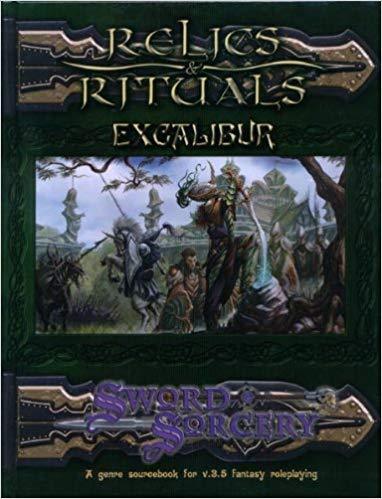
But this is where we get into the real good stuff, the books committed to Arthuriana. Relics and Rituals: Excalibur is the book of choice for if you want to plop a faux-Arthurian Britain into a high fantasy setting. It comes at Arthurian legend from a perspective that inherently has multiple races, high magic, and wandering monsters. You can play as not just a human, but a sidhe elf, halfling, dwarf, or even hobgoblin. Even half-orcs have made it in, though reflavored to be their own race of ‘Wild Man’.
Like most extensive themed campaign books, R&R: Excalibur takes an extensive look at what aspects of the base Dungeons and Dragons systems stays the same and what changes. For instance, some player character classes like fighter, rogue, bard, and paladin fit right in to Arthuriana, while other like the oriental-themed monk and the spell-slinging sorcerer are right out. (Regular classical wizards are still fine, though.) And, as is to be expected, there is a new knight class, though the author does note that it can seem somewhat redundant with the fighter and paladin still around, and its use is optional. There are a few prestige classes, with the one sticking out most in my memory being the classic Green Knight, complete with chlorophyll and resistance to decapitation.
There are a variety of essays encompassing everything from tournaments to the importance of knightly decor to honor and, perhaps most importantly, how to manage D&D’s vastly overpowered magic system and magic items into an Arthurian setting. There are no less than two pantheons, one Faerie lords and the other of this new-fangled ‘God’ fellow. Me being me, I mostly remember the chapter on how to treat different kinds of monsters; I was particularly fond of the idea of making the Fisher King’s cursed kingdom filled with undead trying to enact a danse macabre of everyday life, complete with skeleton farmers driving skeleton horses to plow barren fields. But again, that’s just me.
Relics and Rituals: Excalibur is definitely a worthy book for lovers of Arhturiana. But that’s the thing; it captures the spirit and tone of Arthurian legend, but not Arthurian legend itself. There’s definitely an appeal to it; something novel about the idea of jousting on a chimera, or cockatrice fights at the local fair, but it’s not quite the same. It’s high fantasy D&D stepping into Arthuriana, not the other way around. For that, for the real Arthurian legend lovers, you’ve got to get the real gem.

*Slaps top of book* This bad boy can fit so many knights in it. This is arguably THE book for Arthurian mythology in Dungeons and Dragons. Legends of Excalibur: Arthurian Adventures is a love letter to Arthurian legend. It starts with an incredibly brief summary of the history of Arthurian legend, from Wales to La Morte D’Arthur to John Boorman. LoE:AA makes it clear that it’s up to the reader to go research Arthurian legend for themselves; all the book can do is point them in the right direction. After that, it’s right into the content.
There are some pretty drastic changes made to the base 3rd edition D&D core rules before really setting in. The Alignment system is gone entirely, replaced by a character’s honor score. What are the character race options? Get out of here with that; LoE runs old school, so it’s human or nothing. What you do pick, though, is your starting social class, and that can make just as much difference as whether you have pointy ears or not. All the base D&D classes are chucked out except for fighter, rogue, barbarian, bard, and druid.
All that uprooting is fast replaced by a host of new character options. Legends of Excalibur is smaller than Relics and Rituals, but definitely packs more bang for its buck. The new character classes include the fool (with a special nod to Arthur’s fool, Dagonet), the hedge mage (new general mage/spellcaster), the hermit and the priest (for divine spellcasting), the minstrel (meant to represent more traditional Celtic/druid bards instead of the base D&D one), the noble (so that you can finally live out the fantasy of being rich and respectable), the robber baron (which is like the noble, but with more stabbing and shaking people down), the skald (another bard, but for vikings), the yeoman (Robin Hood/archer type), and, of course, the knight.
As if that wasn’t enough, there are a metric ton of prestige classes. Some are fairly bog standard, like the alchemist or berserker, while others are meant very explicitly to play into Arthurian archetypes. Remember how there was actually more than one Lady of the Lake? Now you can be one too. Merlin? Court mage. Morgan le Fay? Fae Enchnatress. And knights? Oh, you bet there are knight prestige classes here. There are no less than SEVEN knight prestige classes, including Quest Knight (specifically for seeking the Holy Grail), White Knight (to replace paladins), Black Knight (to replace blackguards/antipaladins), and practically every color knight in between.
Legends of Excalibur also offers rules for characters that advance beyond the standard level cap in the Dungeons and Dragons system, into the ‘Epic’ character levels. This is actually one of the reasons why I feel like Dungeons and Dragons can be a good fit for Arthurian legend. A character can start out as little more than a wandering soldier and advance to become as powerful as a demigod. While the typical image of Arthurian mythology is of a fairly low-fantasy medieval Europe, the actual source material, throughout its multiple incarnations, isn’t stingy about giving its characters magic powers, legendary equipment, and impossible challenges to face. While it still needs to be toned down to some degree, there is definitely room in Arthurian legend for the kind of superheroic powers that the Epic rules can bring. (Or at least as long as the setting keeps spellcasters to a minimum.)
This book isn’t just a guide to playing Arthurian characters, but the Arthurian world. There is a complete map of Arthurian Europe that has to reconcile Arthur’s given time with accounts of him rebelling against the Pope and fighting in the Crusades before Islam even existed. It’s a wonderful little detail, trying to account for everywhere that Arthur or one of his knights or relatives supposedly lived in or visited. Another detail is accounting for the the timeline; Legends of Excalibur designates five important time periods in the Arthurian cycle, from just after Uther’s death to the Golden Age of Camelot to the civil war with Mordred. Each period has different effects on not just characters, but the geography, people of the land, and magic. Try to go into the forests just after Uther died, for instance, and a character is likely to run into monsters like dire wolves. Go back when Arthur is on the throne, though, and the forest and its animals will be tamer. It’s a world very committed to the idea of Divine Right, and how a king affects the universe.
Of course there are monsters. There’s the standards; white hart, Questing Beast, though some more obscure monsters like a variety of werewolves are here too. There’s individual entries for monsters to describe their individual place in Arthurian Europe; chimeras and manticores are rare, ogres and trolls are common, etc. The real gem of the monster section, though, is giants and dragons; giants and dragons are staples of knightly mythology, after all, so they get special treatment. Just like people, dragons and giants are categorized by class and bloodline; a noble dragon, for instance, will have scales the color of gold and be the size of a castle, where a lowborn dragon looks like the wrong end of a snake and an umbrella. Naturally, there’s more Honor to be gained fighting one instead of the other. It’s a great system that reflects how, along with the King, giants and dragons are tied to the land.
But the cincher, the real hook that I think makes this book worthy of a true Arthurian legend fan, is the sample adventures and appendix. I, Mordred gave you one shot of teaming up with Arthurian big names; Legend of Excalibur gives you three. Fresh adventurers can help Sir Balin kill the invisible knight, possibly even averting the grail cycle by killing the knight before he reaches Pellam’s castle. More powerful adventurers have to choose sides in the civil war, and Mordred is once again an option. But my favorite of the three adventures has the player characters helping a young Arthur claim a castle. It would be satisfying enough to rub elbows with the likes of Merlin or Sir Kay, but then there’s a side-quest where young Arthur sees Guinevere and is instantly smitten, so he conscripts the players into acting as his go-between for her. Players have to deliver Arthur’s notes Guinevere. They can read the love poems he writes for her; they’re awful. It’s just such a wonderful little detail that it’s hard not to love it.
And then, finally, there is the appendix; a whole cast of Arthurian characters statted out. It would be impossible to cover EVERYONE, but Legends of Excalibur makes a fair effort. LoE remembers some characters that typically get left behind; Dagonet, Morgausse, Sir Bors, etc. Some characters, such as Arthur, are presented at different stages in their life. All-in-all it makes a good roundout for what I’d call easily the best book about Arthurian legend in Dungeons and Dragons, if not one of the best tabletop roleplaying.
If you scanned past all that; this is the book to get for Arthurian legend in D&D. Legends of Excalibur is the beginning, middle, and end of the argument for Arthuriana with tabletop roleplaying. Even if you don’t play 3rd edition, or even D&D, it’s still a valuable resource in converting Arthurian Europe into a tabletop fantasy setting. The only way you could get more in-depth is if you made an entire RPG about Arthurian legend.

But maybe let’s talk about that some other time, huh?
65 notes
·
View notes
Note
AquaSupes for the ship ask?
who’s the werewolf and who’s the hunter Hmmm this is a bit tough because Arthur is naturally wild so he’d make a great werewolf, BUT he’s also known as a tamer of beasts so… I think I’d go with him being the hunter! And sweet baby Clark as a fluffy werewolf who just doesn’t want to hurt anybody.who’s the mermaid and who’s the fisherman Merman Clark all the way :D bugging Arthur who is a fisherman and lighthouse keeper!who’s the witch and who’s the familiar This could really go either way. Hm. I guess I’d have to say… witch Arthur? with Clark as his black cat 83who’s the barista and who’s the coffee addict barista!Arthur and investigative reporter Clark Kent who lives on his coffee, because Arthur can make it the way Ma does.who’s the professor and who’s the TA Oh man, Arthur as the professor! Teaching Marine Biology and Clark his awkward turtle of a TA with a crush as DEEP AS THE OCEAN OH MY.who’s the knight and who’s the prince(ss) I’d love to see Clark as a prince tbh and Arthur as his golden knight. This can switch, of course, with Arthur being the King he is and Clark being his Shield. Either way it paints a beautiful picture doesn’t it? *3*who’s the teacher and who’s the single parent Single dad Arthur oh goodness, with Garth and AJ and Clark as little AJ’s FAVORITE TEACHER.who’s the writer and who’s the editor I’d say Arthur as an up and coming author, perhaps on his first ever novel, a retelling of some amazing event, and Clark is his editor and just SO BLOWN AWAY and crying for more chapters, pls.
67 notes
·
View notes